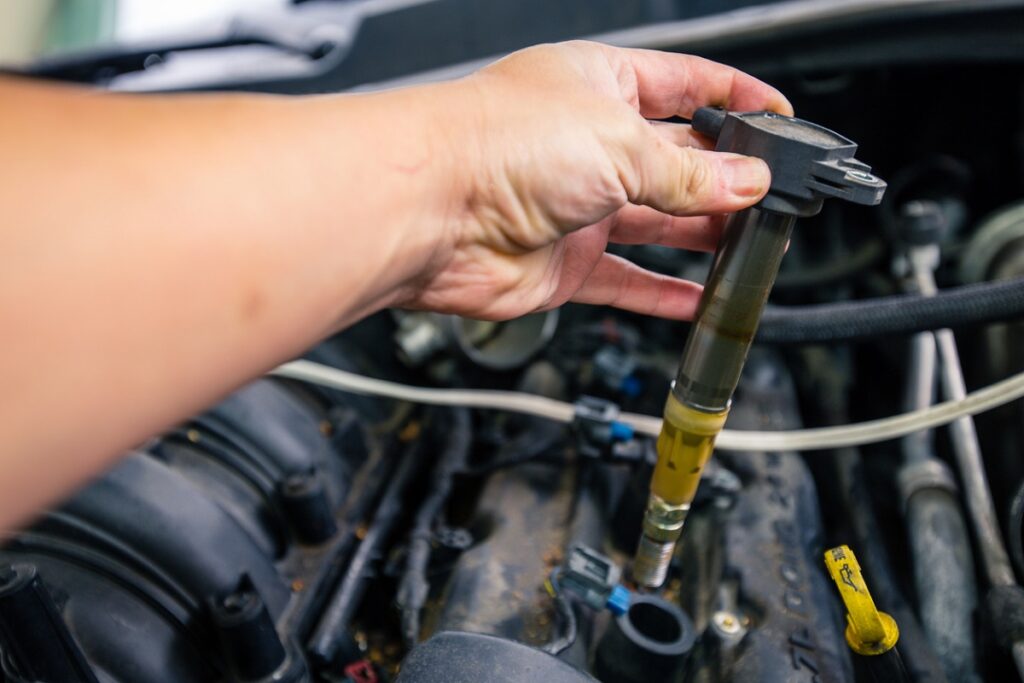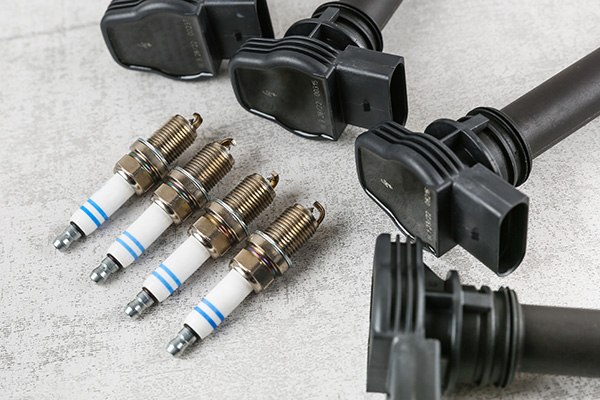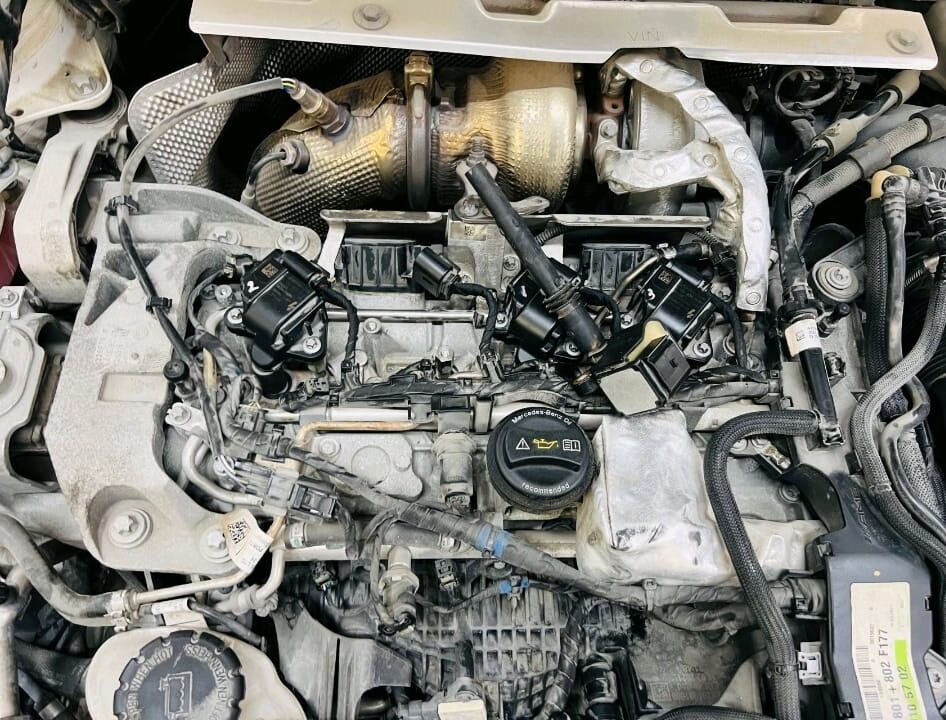Should I replace ignition coils with spark plugs? If both components are showing signs of wear, it’s often beneficial to replace ignition coils with spark plugs at the same time. This ensures optimal engine performance, prevents future issues, and can save on labor costs since both parts are accessed together.
The ignition system in modern vehicles is a complex yet vital part of the engine, as it’s responsible for igniting the air-fuel mixture in the cylinders. Two of the most critical components within this system are the spark plugs and ignition coils. Together, they ensure that your engine runs efficiently. But what happens when one of them starts malfunctioning?
Should you replace both at the same time, or can they be replaced individually? Understanding how these components work and their relationship with each other can help you decide whether you need to replace your ignition coils and spark plugs together.
In this article, we’ll explain the roles of spark plugs and ignition coils, how to tell when they need replacement, and why it might be a good idea to replace them simultaneously.

Contents
What Are Spark Plugs?
Spark plugs are small yet vital components that deliver the spark needed to ignite the air-fuel mixture in your engine’s cylinders. They act as the bridge between the ignition system and the engine’s combustion process. The spark plug receives electrical energy from the ignition coil, which it then uses to create a spark at the appropriate moment. This spark ignites the compressed air-fuel mixture, initiating the combustion that powers your engine.
How Spark Plugs Wear Over Time:
- Heat: The extreme heat generated during ignition causes the spark plug to undergo wear and tear.
- Carbon Buildup: Over time, carbon deposits can accumulate on the spark plug, preventing it from sparking efficiently.
- Erosion: The electrodes on the spark plug erode with repeated use, making the spark weaker.
If the spark plugs fail, the engine may misfire, idle roughly, or experience a decrease in fuel efficiency.
When to Replace Spark Plugs:
- Engine Misfires: Rough running or skipping engine cycles due to improper spark.
- Poor Fuel Economy: A noticeable drop in miles per gallon.
- Difficulty Starting: Extended engine cranking, especially in colder conditions.
- Check Engine Light: Triggered by misfire detection or faulty spark plug performance.
Typical Spark Plug Lifespan: Spark plugs typically need to be replaced every 30,000 to 100,000 miles depending on the type used (copper, platinum, or iridium). Copper spark plugs have the shortest lifespan, while platinum and iridium spark plugs last longer.
What Are Ignition Coils?
Ignition coils are responsible for converting the 12-volt current from the vehicle’s battery into the thousands of volts required to generate a spark at the spark plug. The ignition coil works with the engine control module (ECM) to ensure that the spark is timed precisely with the engine’s combustion cycle. In modern vehicles, each cylinder typically has its own ignition coil (known as coil-on-plug), while older models may use a single coil for multiple cylinders.
Signs of a Faulty Ignition Coil:
- Engine Misfires: When an ignition coil fails, the engine may misfire, especially under load or acceleration.
- Decreased Acceleration: If the ignition coil is malfunctioning, the car may have trouble accelerating or may hesitate when pressing the gas pedal.
- Rough Idling: If the car shakes or vibrates when idling, it could be a sign that the ignition coil isn’t functioning properly.
- Poor Fuel Economy: A malfunctioning ignition coil can cause inefficient fuel burning, leading to increased fuel consumption.
- Check Engine Light: Faulty ignition coils will often trigger the “Check Engine” light, with diagnostic codes that point to misfires.
Typical Ignition Coil Lifespan: Ignition coils generally last between 60,000 and 100,000 miles, but can fail prematurely due to heat, vibration, or electrical issues.
Should You Replace Spark Plugs and Ignition Coils at the Same Time?
When both spark plugs and ignition coils show signs of wear, replacing them together can be a strategic choice. Let’s explore the benefits and considerations of replacing these components simultaneously to maintain optimal engine performance.
Benefits of Replacing Both Spark Plugs and Ignition Coils Together
Replacing both spark plugs and ignition coils at the same time can offer several advantages, including improved engine performance and reduced future maintenance costs.
1. Improved Performance: Replacing both parts at the same time ensures that both the spark plug and ignition coil are in optimal working condition. This results in smooth engine performance, as both components work in harmony to create a reliable ignition.
2. Cost and Time Efficiency: Replacing both components together is often more cost-effective, as it eliminates the need for separate labor charges if you were to replace them at different times. The mechanic can access both parts simultaneously, saving you time and money.
3. Prevention of Future Issues: If one component fails, the other may soon follow, as they are interconnected. Replacing both at once prevents future failures and keeps your engine running smoothly for a longer time.
4. Consistency Across All Cylinders: In vehicles with multiple cylinders, replacing both the spark plugs and ignition coils at the same time ensures consistent performance across all cylinders, avoiding issues where one cylinder may be running more efficiently than others.
When to Replace Spark Plugs Without Ignition Coils
In some cases, it may not be necessary to replace both components together. If your spark plugs are showing signs of wear but the ignition coils are still functioning well (i.e., no engine misfires, no rough acceleration), replacing only the spark plugs might be sufficient.
For example, if your engine is misfiring due to fouled or worn-out spark plugs but the ignition coil still provides a strong spark, replacing the spark plugs can restore optimal performance. Ignition coils tend to last longer, so if they’re still working well, there’s no need to replace them prematurely.
When to Replace Ignition Coils Without Spark Plugs
Ignition coils may need to be replaced on their own if they are malfunctioning, even if the spark plugs are still in good condition. If the ignition coils are responsible for engine misfires or poor acceleration, replacing them can solve these issues.
In this case, replacing the ignition coils alone could restore engine performance without needing to replace the spark plugs at that time. However, if the spark plugs are due for replacement soon, it might still be beneficial to replace both components at once to avoid multiple trips to the mechanic.

DIY vs. Professional Replacement
Deciding whether to replace ignition coils and spark plugs yourself or seek professional help depends on your comfort level with car maintenance and the tools at your disposal. Below, we’ll explore the pros and cons of DIY replacement versus professional service, helping you make an informed choice based on your situation.
DIY Replacement
If you have the necessary tools and automotive experience, you can replace both spark plugs and ignition coils yourself. The task typically involves the following steps:
- Accessing the ignition coils and spark plugs: In many vehicles, you’ll need to remove engine covers and other parts to access the components.
- Removing the old components: Use a spark plug socket to remove the spark plugs and a ratchet wrench to remove the ignition coils.
- Installing the new components: Ensure the new spark plugs and ignition coils are installed correctly, and torque them to the manufacturer’s specifications.
Tools You’ll Need:
- Ratchet wrench and socket set
- Spark plug socket
- Torque wrench
- Anti-seize lubricant for spark plugs (optional)
- New spark plugs and ignition coils
Professional Replacement
If you’re unsure about performing the replacement or lack the necessary tools, it’s advisable to take your vehicle to a mechanic. A professional mechanic will have the tools, expertise, and knowledge to replace both spark plugs and ignition coils efficiently, ensuring proper installation and avoiding any mistakes that could damage your engine.
Frequently Asked Questions
Here are some FAQs about replacing ignition coils and spark plugs –
1. Can I replace spark plugs without replacing ignition coils?
Yes, you can replace spark plugs independently of the ignition coils. If the ignition coils are working fine, replacing just the spark plugs is sufficient.
2. How often should I replace ignition coils and spark plugs?
Spark plugs should be replaced every 30,000 to 100,000 miles, while ignition coils typically last between 60,000 and 100,000 miles. Always check the manufacturer’s recommendations for your specific vehicle.
3. Will replacing both spark plugs and ignition coils improve engine performance?
Yes, replacing both components at the same time ensures that the ignition system is working at full capacity, which can result in smoother engine operation, better fuel economy, and improved acceleration.
4. Can a faulty ignition coil damage a spark plug?
Yes, if the ignition coil is malfunctioning, it can cause weak or inconsistent sparks, which can lead to carbon buildup or even damage to the spark plug over time.
5. Is it necessary to replace all ignition coils at once?
If your vehicle has multiple ignition coils and one fails, it’s not necessary to replace all of them. However, replacing all ignition coils may be advisable if your vehicle has high mileage or if they are all showing signs of wear.
Conclusion
Whether you should replace ignition coils with spark plugs depends on the condition of each part. If your spark plugs are worn out and your ignition coils are still functioning well, you may only need to replace the spark plugs.
However, if both components are showing signs of wear, replacing them together can improve engine performance, prevent future issues, and save on labor costs.





